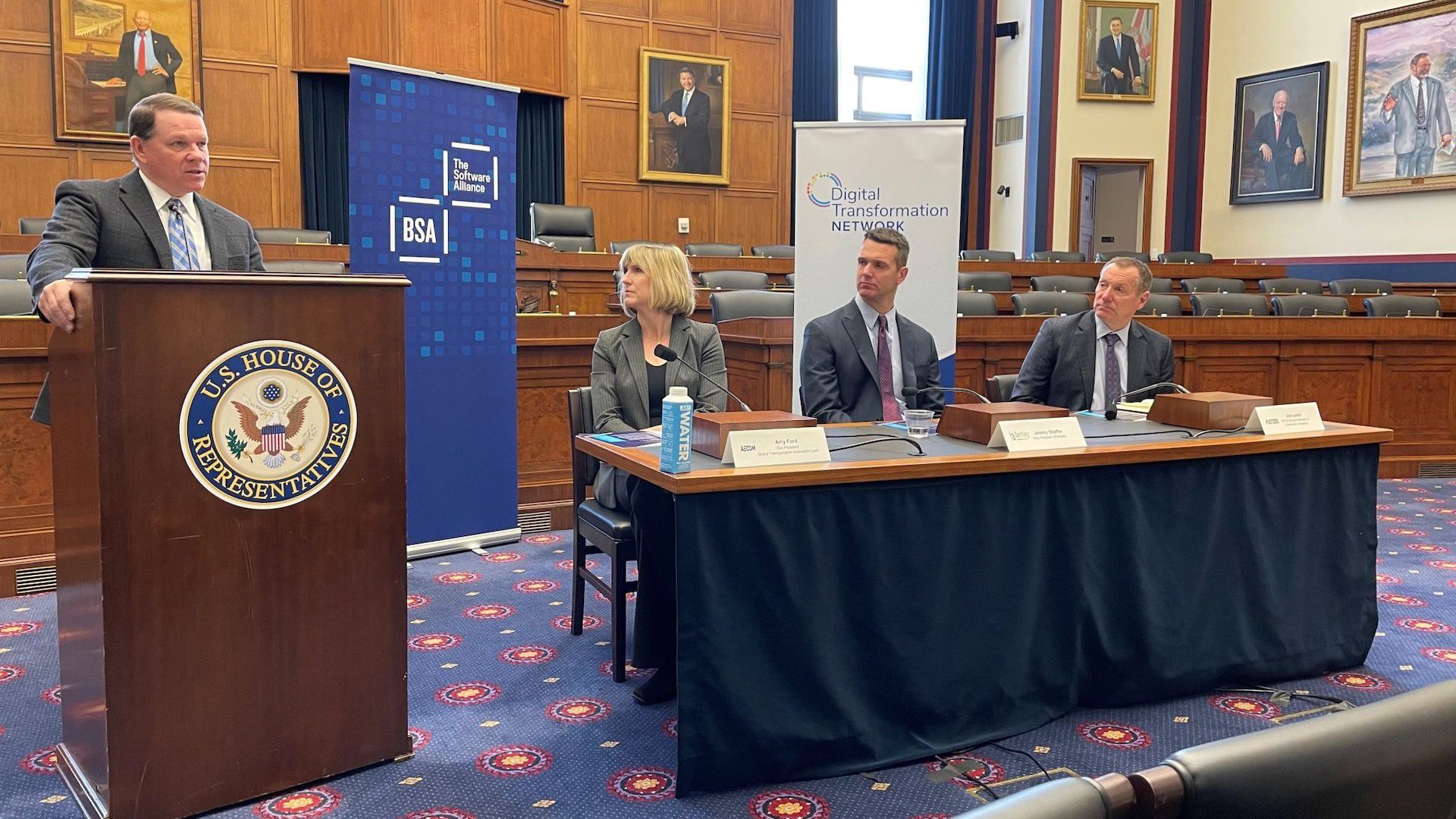
Earlier this month, I was in Washington, D.C. for policy conversations with U.S. government officials and industry leaders to discuss digital construction technology’s critical role in building strong and sustainable infrastructure. Momentum is increasing for the use of technology in how infrastructure is designed and constructed – propelled by the U.S. government’s investment in infrastructure to the tune of more than $1 trillion through the Bipartisan Infrastructure Law (BIL).
During my time in DC, I took part in a Congressional briefing on the benefits of digital construction introduced by House Transportation & Infrastructure Committee Chairman Sam Graves. I also participated in a panel discussion on the need for building more resilient infrastructure, hosted by the American Society of Civil Engineers (ASCE). While on my trip, I likewise had the opportunity to discuss these topics with the White House, as well as senior officials from both Congress and the Federal Highway Administration (FHWA).

As part of our effort to improve outcomes in the industries we serve, Autodesk partners with governments around the world to drive digital transformation and enable the AEC industries to build better, more resilient infrastructure.
In all my discussions, I emphasized the enormous challenges in the construction industry and how Autodesk customers are tackling them. I also highlighted the importance of a key program included in the BIL — $100 million specifically to accelerate adoption of digital design and construction tools by U.S. state DOTs. This program can be a gamechanger for the digital transformation of transportation infrastructure. FHWA is preparing to launch this program soon and Autodesk stands ready to help make it a success.
I was also in D.C. the same week that both ASCE and the American Association of State Highway and Transportation Officials (AASHTO) held their annual policy conferences. I enjoyed meeting with ASCE and AASHTO members and I’m grateful that so many professionals in our industry are sharing their time and expertise with policymakers to promote smart investments and ensure U.S. infrastructure dollars are used wisely. I talked about the need for a mindset shift – from reactive to proactive – to build more innovative, cost-effective, and sustainable projects.

A key takeaway from my time in D.C. is that policymakers increasingly understand that digital design and construction tools are important technologies for transforming the nation’s infrastructure to meet today's and tomorrow’s challenges.
For our customers looking to participate in federal infrastructure programs, highlighting the use of digital tools can clearly help them to stand out, as long as they focus on the outcomes that technology brings to infrastructure – including resiliency, sustainability, and flexibility.
I look forward to continuing discussions with policymakers so we can build even more momentum for legislation that support the digital transformation of infrastructure development in the U.S. and other markets we serve.

May we collect and use your data?
Learn more about the Third Party Services we use and our Privacy Statement.May we collect and use your data to tailor your experience?
Explore the benefits of a customized experience by managing your privacy settings for this site or visit our Privacy Statement to learn more about your options.